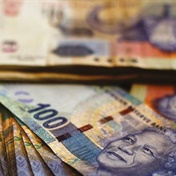
On an industrial park about an hour’s drive toward the South China Sea coast from Ho Chi Minh City sit giant mounds of raw metal shrouded in black tarpaulin. Stretching a kilometer in length, the much-coveted hoard could be worth about $5 billion at current prices.
In the esoteric world of aluminum, those in the know say the stockpile in Vietnam is the biggest they have ever seen — and that’s in an industry that spends a lot of time building stockpiles while analysts spend a lot of time trying to locate them. But as far as the increasingly under-supplied market is concerned, it’s one that may never be seen again.
Why it’s unlikely to move anytime soon involves Vietnam’s customs authorities. How its existence has become so significant, meanwhile, opens a window on a ubiquitous, yet erratic commodity at a time when makers of everything from car parts to beer cans are competing for more of it as they emerge from the coronavirus pandemic and China throttles supply.
Signs of tight physical supply across the metals market are also acting as a counterweight to the growing nervousness about the broader macro outlook for major industrial economies, and particularly top commodities consumer China. In the case of aluminum, spreads have tightened significantly over the past month, even as prices slumped from multiyear highs.
Given the diverse uses and supply dynamics for the individual metals, the unusual synchronised tightness across the LME’s six main contracts is a sign of how widespread the logistical turmoil is, and how broad the rebound in demand has been since the early stages of the pandemic, said Oliver Nugent, a base metals analyst at Citigroup.
“A big part of the tightness that consumers are facing is down to logistics, there’s no doubt about it,” Nugent said by phone. “But it’s also indicative of very firm demand.”
To be sure, the across-the-board tightness might not last for long. Backwardations in markets like copper and lead are fading, even as aluminum and nickel spreads become tighter. But one consequence of the supply-chain turmoil is that the price spreads on other global exchanges might tighten further even as the LME market softens, Nugent said.
In the case of copper, for instance, there’s a growing backwardation in Shanghai Futures Exchange contracts, even as LME spreads retreat from all-time highs seen during an unprecedented supply squeeze last month.
Copper futures fell 1.6% to settle at $9,406.50 a metric ton at 5:53 p.m. in London, with deliveries of metal into LME warehouses in the U.S. helping to partially allay concerns about supply in the wake of the squeeze.
Aluminum prices on the LME were 1.6% higher at $2,616.50 a ton, down from above $3,200 a month ago.
With assistance from Yvonne Yue Li.













